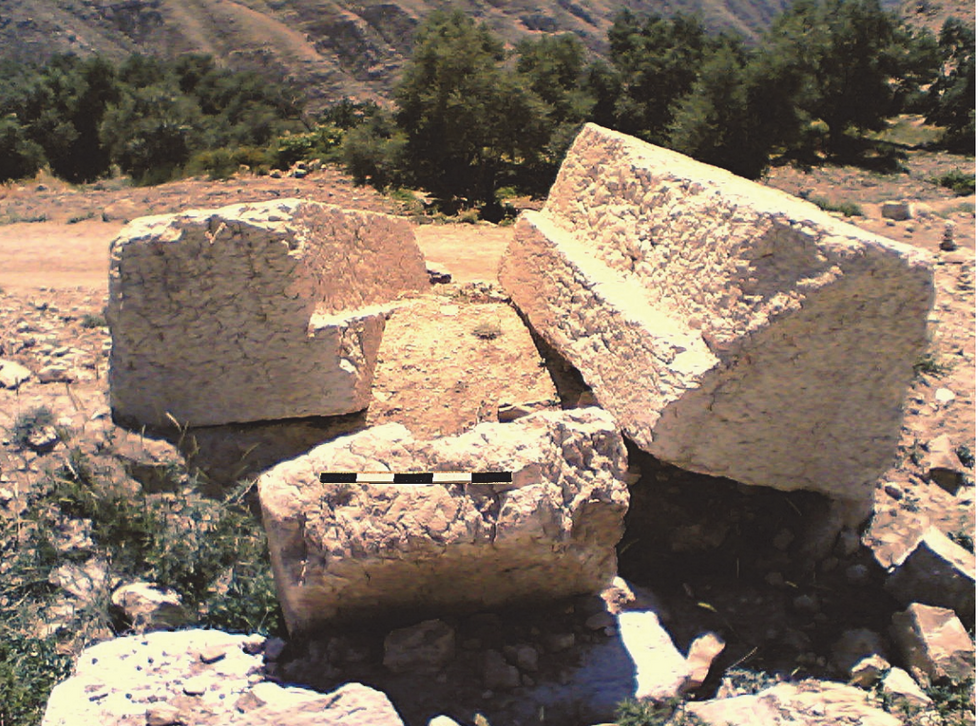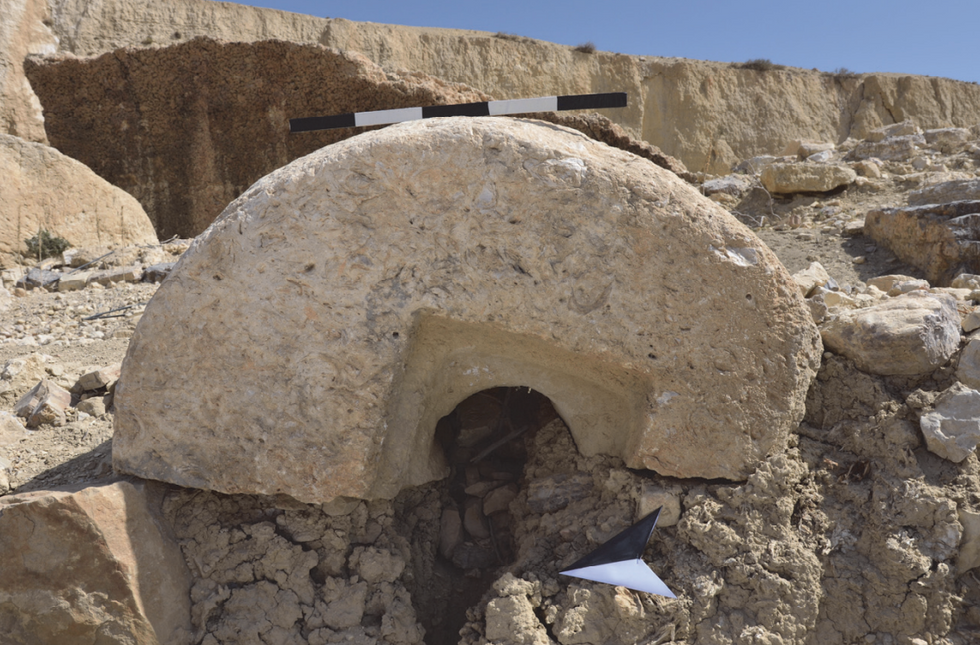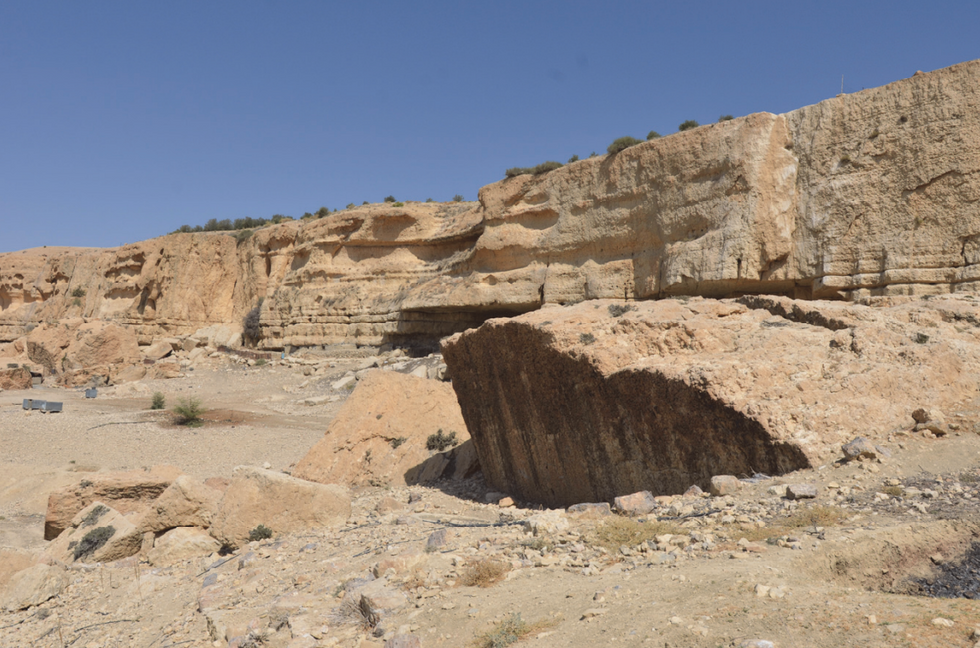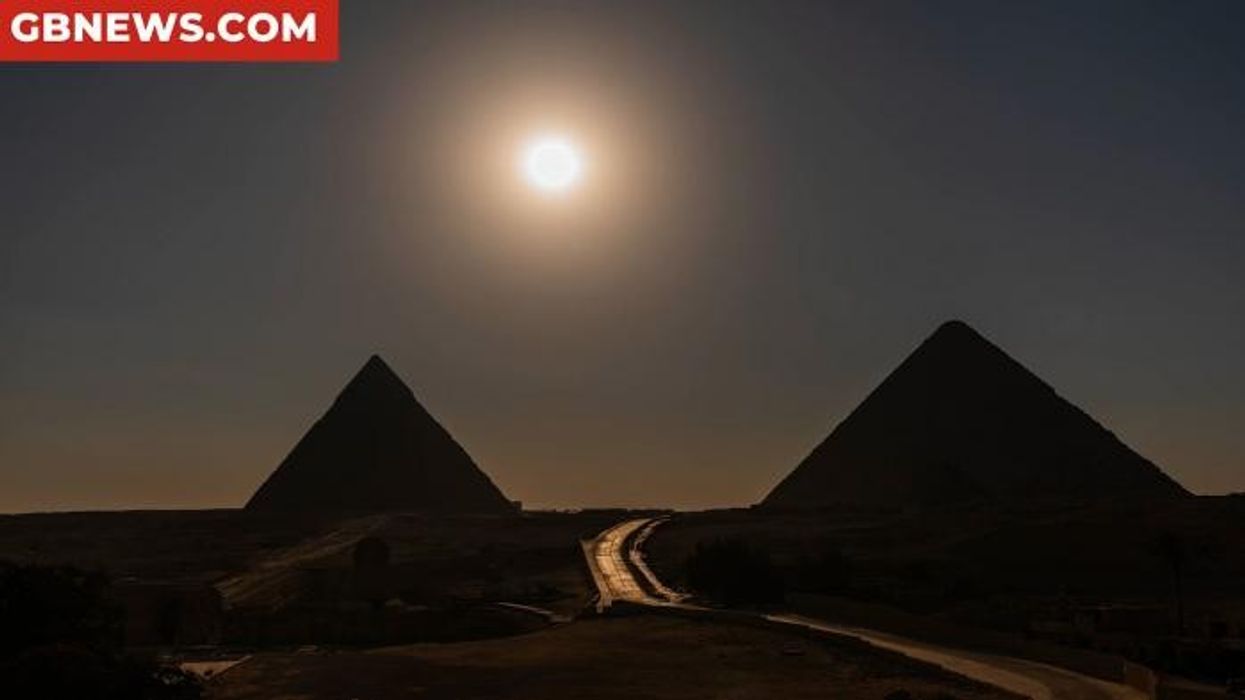Archaeologists unearth mystery Christian settlement hidden for centuries

The ancient settlement was discovered by archaeologists in Jordan
Don't Miss
Most Read
Archaeologists have uncovered the remains of a mysterious Christian settlement in the Middle East dating back centuries.
Dr Musallam R. Al-Rawahneh, Associate Professor of Archaeology at Mu’tah University in Jordan, published his findings in the journal Gephyra in May.
In the research article, he revealed the ancient site of Tharais had been discovered by investigators during a three-year-long fieldwork project in Jordan, which got underway in 2021.
Archaeologists used what is known as the Madaba Mosaic Map, which identifies archaeological sites dating back to the Byzantine period, to guide their work.

Stones believed to be the entrance to a church were found at the site
|Dr. Musallam R. Al-Rawahneh/Gephyra journal
The Byzantine Empire preceded the Roman Empire, lasting from around 330 AD to the 15th century.
Among the discoveries made at the site were ruins of a mill, an olive press, and remains of a grape press.
The foundations of a structure "closely related to the Byzantine church" were also discovered, Dr Al-Rawahneh stated in the journal.
This includes stones believed to have marked the entrance to a church.
LATEST DEVELOPMENTS:

Remains of what is believed to have been a stone olive press were found at the site
|Dr. Musallam R. Al-Rawahneh/Gephyra journal
There were also pottery shards at the site dating back centuries, including to the Roman period.
Archaeologists further discovered tombstones, inscribed in Greek and Latin, from the Byzantine period.
"These inscriptions follow the general formula of Byzantine Christian inscriptions", Dr Al-Rawahneh states in the journal.
The professor added that text carved in the tombstones "exhibit several decorations and inscriptions that show clear Christian imagery and current practices", which he said suggests "an established and flourishing Christian society" was present there.

A general view of the site where the archaeological discoveries were made
|Dr. Musallam R. Al-Rawahneh/Gephyra journal
Dr Al-Rawahneh said that while the study had successfully identified Tharais, further archaeological work is needed.
He concludes: "To fully comprehend Tharais’ specific functions, cultural practices, and historical context within the Byzantine era, further archaeological exploration is essential."
In another recent archaeological discovery, a rare rock carving was unearthed in southern Egypt could unlock secrets about the country's earliest rulers.
The ancient etching was found carved into sandstone near Aswan and is believed to date back to the fourth millennium BC, predating the construction of the first pyramids by centuries.
The exceptionally well-preserved carving depicts a seated figure with distinctive features of early Egyptian kings, including the characteristic long, pointed false beard worn by pharaohs.
According to research published in the journal Antiquities, the figure represents a member of the ancient Egyptian political and military elite from the First Dynasty period, a crucial era that witnessed the beginning of political unification across Egypt.
The carving shows the figure seated on an elaborate boat, being pulled by five individuals whilst another person steers using an oar.
This mysterious figure is not Pharaoh Narmer, who became Egypt's first pharaoh in 3100 BC, leaving the true identity of this warrior elite unknown.











